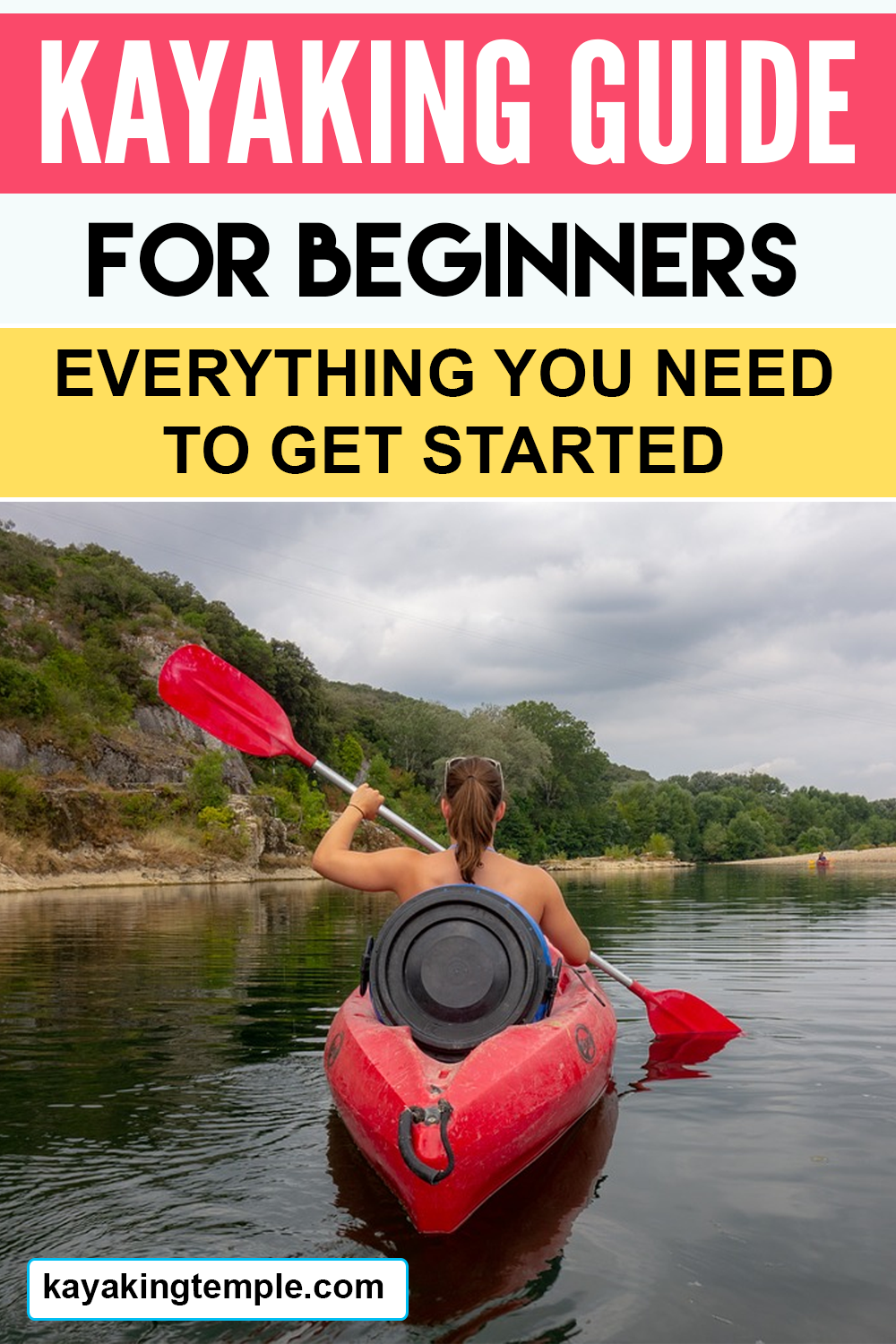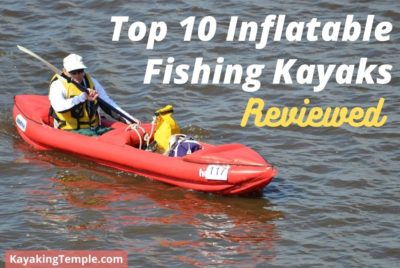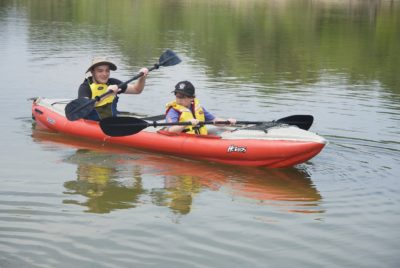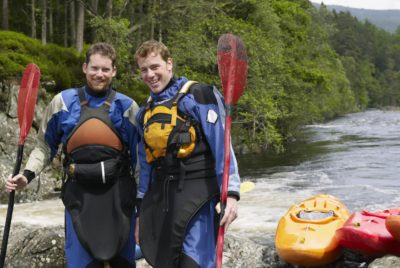Here is a top ten list of the best inflatable fishing kayaks for everyone who enjoys…
Kayaking Guide For Beginners
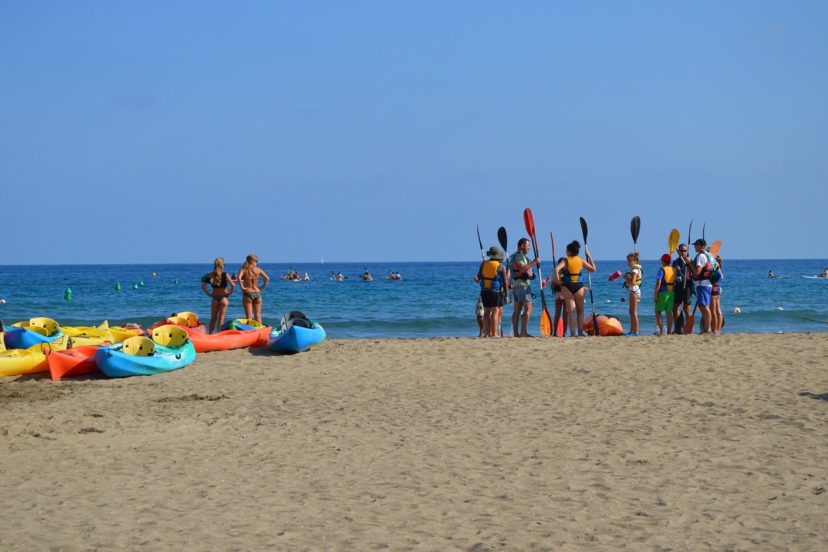
Are you planning to go kayaking for the first time? Well, you’ll be giving yourself a splendid experience with nature in the aquatic environment, having fun, and interacting with friends. However, most new kayakers often have questions regarding the right gear, accessories, and equipment that are necessary and the optional ones.
This article is designed as a beginner’s guide to the essential kayaking kits that every starting paddler should own. Here we go.
Kayaking essential gear for beginners: What do you need to start kayaking?
1. Kayak – What is the best kayak for a beginner?
A newbie might think that all kayaks look the same but that’s not true. There are lots of different kayaks in the market, such as sit-on-top, sea kayaks or slalom kayaks, just to mention a few. The available options might get a beginner easily confused.
We recommend that beginners start out with a recreational kayak. These are usually short, often less than 4.5m long, and are designed to have large cockpits so that paddlers can climb in and out of the boat easily. Many of them are equipped with comfy back supports, some have foot pedals under the rudder, which aids paddling in rough waters.
The sit-on-top kayaks do not have a cockpit, simply climb the boat and sit on top of the mounted seat. This is an excellent option for beginners who might be worried about getting trapped in the boat if it capsizes. In this case, the paddler will simply fall inside the water. However, you will likely get wet while paddling as the water splashes on you.
2. Paddle
The paddles of kayaks and canoes are not the same. The main difference is that paddles for kayaks have a blade on both ends while that of a canoe has a single blade on one end. The length of kayak paddles ranges from 210cm and 260cm.
Newbie kayakers should bear in mind that taller people would find longer paddles more convenient. Most newbies start paddling with a plastic model. You should hold an extra paddle while going on a kayaking adventure so you won’t get stranded if the main one is lost or broken.
3. Buyoncy Aid
As a beginner, the accessory you should never leave behind is the buoyancy aid. These are similar to life jackets, but they allow you to move your neck and arms more conveniently. This higher level of flexibility makes it an excellent choice for kayakers.
A buoyancy aid is important, even if you have extensive swimming experience. It comes in handy when you get into trouble in the water.
Although most kayaking clubs would provide a buoyancy aid, you should buy or rent one when you are going on a kayaking adventure alone.
4. Helmet
You will notice that almost every kayaker wears a helmet. It is essential for protecting your head from accidental bash by your own paddle or that of other kayakers. It also protects you from lethal accidents when the boat capsizes. Sea kayakers seem to be an exception to the helmet rule, but almost every other kayaker wears a helmet while paddling.
5. Wet Shoes
Kayakers wear wet shoes designed to walk on slippery surfaces. These are usually made with neoprene materials and have grippy rubber soles. Don’t use flip flops because they won’t support you while you are on a slippery surface. A viable alternative to wet shoes is trainers, but they can get wet easily and are not made to be used in the water anyway. Wet shoes are not expensive, we recommend you get some.
6. Water Resistant Sunscreen
You should get a sunscreen handy since you will be out in the sun while paddling your kayak. But you must select a water-resistant type because most sunscreen creams lose their efficacy upon contact with water. Keep the sunscreen inside your kayaking bag, so you always have it with you anytime you are going to paddle. You will often notice a burning sensation on the part of your body that needs sunscreen. You can apply the cream while on water.
7. Dry Bag
You’ll want to keep your stuff dry while paddling. That is why you should select a dry bag to keep things such as clothing that may get wet and your other valuables. The dry bag has layers that you can remove depending on the temperature. It’s a smart choice to always have an empty dry bag handy.
You can keep your phones, tablet, watch, and other equipment that you do not need while paddling inside the bag. Dry bags are inexpensive and come in various sizes, make sure you select the size that suits your boat.
Do you need lessons to kayak?
It is not compulsory to pass through kayak lessons before you start paddling. However, you will have a more enjoyable experience if you have someone take you through a basic orientation. Without proper coaching, you might just be paddling in circles during your first experience with a kayak. Kayaking lessons will help you kickstart paddling and also teach you vital lessons such as recovering when your boat capsizes.
Although kayaking lessons are not absolutely necessary, they can be very beneficial for getting you up and running with paddling your kayak for the first time.
Can you kayak alone?
Every decent kayaking guide for beginners will advise newbies not to go kayaking alone. Even if you have extensive experience, kayaking alone is not a good idea. You can never tell when you’ll get into trouble. Having someone around who can give you a helping hand can be a lifesaver – especially when you are new to kayaking.
Do kayaks tip easily?
Most beginners are concerned about their boat tipping over. However, there is no reason to overly worry with most recreational kayaks being very stable and when used on calm waters, they hardly ever capsize – even if you try to tip it over yourself.
However, the type of kayak you are paddling, and the aquatic environment goes a long way to determine the stability of your kayak. For instance, the risk of tipping is high while paddling on a lightweight kayak on rapid flowing water.
Do you get wet while kayaking? What to wear?
The way you should kit yourself while kayaking would depend on the weather. A pair of shorts and a t-shirt would be an excellent choice for hot sunny weather. However, most paddlers prefer to wear a dry top or kayaking cagoule. Bear in mind that even a small splash from the water can get you wet.
Even if the air is hot, the water can still be chilling cold. You might also fall inside the water altogether. That is why your dressing should align with the water temperature. Many beginners wear kayaking wetsuits. Don’t forget to wear gloves as well.
Last tips for Kayaking beginners
Are you planning a kayaking trip for yourself? Here are some useful tips.
- For a start, select small water that is calm. An ideal location is a lake or pond that has little or no powerboat traffic at all.
- Choose a gentle-slopping sandy beach to launch into the waters. Muddy or rocky shores would be tricky to deal with.
- Select a calm sunny day for your paddling. Windy and high-tide days could make paddling difficult for a beginner.
- If the breeze is strong, you should start paddling against the wind. This way, you would be paddling back with the tailwind easily.
- For a start, plan simple outings that do not exceed two hours. Extensive expeditions can become overwhelming and stressful.
Like This Article? Pin it on Pinterest
